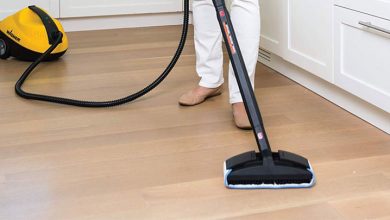
Using an electric heater is certainly not the most cost-effective way to heat a room, but for those who cannot install a system that heats each room uniformly, it is a relatively easy solution. In this mini-guide, we will explore how to select an electric heater that suits your needs.
Fortunately, today, compared to the past, several models on sale guarantee considerable energy savings and extraordinary warmth. If you have decided to buy one, do not choose the first one you find at the hypermarket just because it is cheap; instead, study the relative advantages and disadvantages of the various types. Let’s examine the differences between the different models to help you select the right one.
How to choose an electric heater? By type
On the market, various types of electric heaters stand out for their operation, heating power, features, dimensions, and price. Some models are designed for wall installation only, utilizing brackets, while others are portable, featuring a carrying handle and a platform that keeps them upright. Finally, some hybrid models can be used either for wall mounting or as a portable option.
Depending on the type of heat production, there are four categories :
- The electric heater with resistance
- The electric halogen heater
- The electric quartz heater
- The electric infrared heater
How to Choose an Electric Heater with Resistance?
The electric heater with resistance, also known as “convector heaters” or “fan heaters,” was the first to be introduced to the market. They allow you to heat small rooms quickly; consider that the most powerful ones can heat up to 20 square meters. They work thanks to the resistance that transforms electrical energy into heat.
Some models are composed of an internal irradiation fan, which can also rotate, that diffuses heat into the surrounding environment, and a metal or ceramic heating element.
The old models had an electrical energy consumption of about 2000 w/h, and as a result, the expense was considerable, so ignition was limited. Today, companies have developed various models, paying particular attention to design and methods to reduce electricity consumption.
In this way, you will be able to choose a program with low voltage, set the programmed start and stop times, and find a heater with an anti-fall and anti-overheating safety system.
>>> Where to buy convector heaters?
How to Choose an Electric Halogen Heater?
The electric halogen heater is one of the solutions with the lowest electricity consumption, as heat is produced by energy-saving halogen lamps. To understand better while with the resistance heater, we talked about 2000 w/h here, we talk about 800 w/h. In this model, heat is propagated in the surrounding air through a system of internal fans that allow for quick heating of small rooms, while also providing soft lighting in the bedroom.
The advantages of this heater are numerous: its reduced dimensions, ease of transport, low energy consumption, anti-tipping, and anti-overheating system. Some models allow the lamps to take on different inclinations and control use through remote controls; others can be installed on walls, providing not only heat but also excellent points of light thanks to the soft light of halogen lamps.
>>> Where to buy an electric halogen heater?
How to Choose an Electric Quartz Heater?
The electric quartz heater operates similarly to that of the halogen heater. The lamps used are quartz and appear as small orange neon lights. Each of them absorbs approximately 400W, so the maximum electricity consumption can be determined depending on the number of lamps.
This model represents one of the simplest solutions for those who want a heater that is easy to transport and guarantees rapid heating. On the market, there are models equipped with diffusion fans and a tilting top to direct the heated air to a slightly larger room. The energy consumption ratio of heat is excellent.
>>> Where to buy an electric quartz heater?
How to choose an electric infrared heater?
The electric infrared heaters work by radiation, and they interact only with the objects that come into contact with the produced beam of waves. This model is equipped with an infrared radiant panel that quickly propagates heat.
The advantage is that heat is not wasted in the room because it is radiated directly to the objects. The infrared heater is available in an oscillating version, allowing you to adjust the direction of the heat.
It can be installed in rooms used for only a short period, such as when you are sitting at the table or on the sofa. The infrared radiation propagates in a straight line and heats the objects within the emitter’s cone of emission, with minimal energy consumption, and it does not require high temperatures because the heater begins to heat up immediately upon activation. The disadvantage is that as soon as it is turned off, it cools down quickly.



